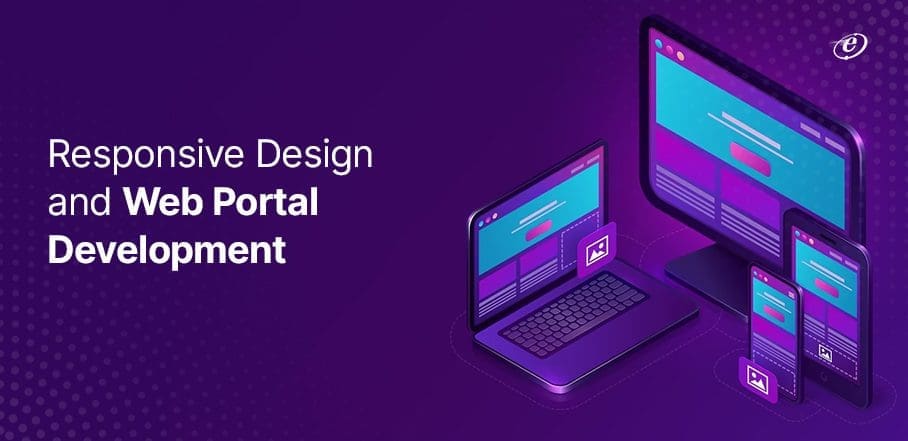
How to Digitally Transform Your Business? Benefits & Ideal Strategy
Until Covid-19 struck, digital transformation was a regular item in the annual to-do list of most businesses, regardless of which sector they belonged to. But the pandemic altered this status quo by forcing companies to fast-track their digital transformation plans.
It’s important to note here that most such businesses already used digital channels and digital tools. However, there is more to digital transformation than digital tools or doing away with paper records. In that sense, digital transformation is as much about your processes and culture as it is about using digital tools.
So, what exactly is digital transformation then?
In the industrial context, it refers to all solutions and innovations that enable your business to adopt processes that improve product optimisation.
Industrial digital transformation is a three-pronged strategy. While businesses across industries have been dabbling with two of these – viz. enhanced manufacturing processes and automation – they’ve mostly paid lip service to the third, but most important, leg of this transformation.
And that relates to business or work culture. As mentioned previously, digital transformation is more about an organisation’s processes and way of working. This is why businesses pursuing change also need to transform their existing processes and approaches to suit an increasingly digital world.
Benefits of Industrial Digital Transformation for Businesses
- Reduces Cost and Optimises Budget
Digital transformation helps your business optimise budgets by identifying and reducing suboptimal costs. To give you a basic example, digitising routine procedures can reduce stationery and staffing costs. Simultaneously, it can also lead to greater transparency, accountability and help your employees focus on more productive tasks.
When you have a digital trail of each and everything you do, it becomes easier to evaluate performance. By making all processes digital, your business can review each expense and optimise budgets by reducing wasteful or unproductive costs.
- Decentralizes Production
A large and centralised production facility is no longer desirable in a fast-changing world. Instead, you need a solution that helps you get to your customer or target market in a faster and efficient way. This is where a decentralised production system comes into the picture.
For instance, our mobile app development services can help you create an app to remotely operate and monitor your business and ensure business continuity in the most challenging times, as this pandemic has shown. Decentralised production also immunises you from localised problems as the risk is distributed across the larger network.
- Increases Efficiency and Productivity
In a digitally transformed setup, machines seamlessly converse with one another when performing essential business functions instead of relying upon human workers to act as an information bridge.
This frees up your employees from spending time doing repetitive tasks and reduces your budget from bloating because of the need to hire workers to ensure redundancy. On a macro level, this leads to greater efficiency for your business.
Similarly, the centrality of data to every decision-making process ensures fewer instances of downtimes (planned or unplanned), leading to greater productivity.
- Incentivises Innovation
As constant learning and unlearning are at the heart of digital transformation, it helps your business to continuously experiment and tinker with its processes. This often leads to innovations that can lead to new business propositions.
Furthermore, incentivising innovation saves you money by refining processes and prepare for the future by constantly researching market trends and customer preferences. For instance, you can hire mobile app developers to see how mobile solutions enhance your productivity while also giving insights into customer behaviour.
- Creates New Revenue Streams
Digital transformation has upended not only existing ways of doing business but also long-held notions of monetisation channels and strategies. For instance, it can open up several revenue streams that were previously either blocked or unknown to a business.
And since digital transformation empowers you to quickly respond to market movements, pivoting your processes to a new business opportunity is a lot easier than before. In that sense, while embracing digital transformation is a massive challenge initially, businesses that accomplish it can look forward to a never-ending basket of revenue streams and business opportunities.
- Introduces Agility in Response to Market Challenges
Dynamic market demand and fast-changing customer preferences are the driving factors for digital transformation initiatives. As a digitally transformed business, you can tackle these challenges by being more proactive and agile in your responses.
For instance, digital transformation enables you to complete tasks faster using the latest technologies and tools, customise your solution for a customer’s specific needs and challenges, and adapt yourself to various internal and external (Covid-19?) exigencies.
- Encourages Cross-functional Collaboration
Digital transformation is an open highway where there is no barrier to the free flow of information throughout your organisational hierarchy. In other words, there is no place for informational or procedural silos that work detached from the rest of your organisation.
Because digital transformation encourages a free and continuous exchange of information, it also results in more collaborations between the different functions of your business. While this helps you get an eagle-eye view of your business, it also leads to more innovations, faster decision-making, and smoother functioning.
- Relies on Data to Make Decisions
Data is at the heart of digital transformation. By embracing the latter, you can make each business decision based on collected and analysed data.
Decisions made in this manner are not only more likely to result in positive outcomes, but they are also quicker and more accurate than decisions made on an ad-hoc basis or intuitively.
How to Implement an Industrial Digital Transformation Strategy?
Its many benefits notwithstanding, jumping into digital transformation without a strategy can do more harm than good to your business. Instead, here’s an overview of what your business’s digital transformation strategy should consist of:
- Educate and Ideate
The first step in the digital transformation process requires educating every stakeholder in your business on the virtues of digitalisation. Right from the basic principles of digital transformation to how they can help achieve your business goals, each employee needs to have a broad understanding of the process.
Only when this step is complete can you ideate a comprehensive digital transformation strategy by taking inputs from every stakeholder in the process.
- Align Digital Transformation with Your Business Goals
Based on the previous point, it’s important to align this digital transformation strategy with your desired business goals. This will help drive a profitable and brand-enhancing approach to work from the top down.
One way to achieve this is by communicating, organising, and making your digital transformation strategy easily accessible to all. This smoothens out the bumps in the process, which are inevitable in any major transformation initiative.
Read more: How Analytics Can Help Manufacturing Industry Prepare for COVID-like Shocks
- Identify and Document Possible Risks
As beneficial as transformations are, they also have their share of risks. This is why you must identify, document, and find ways to neutralise risks or minimise their impact.
For instance, something as seemingly benign as moving to a new collaboration tool or any other internal application can introduce productivity and error risks. By identifying and preparing for these risks early on, your business’s digital transformation journey will be smoother and encounter less resistance from stakeholders.
- Run Pilot Tests
Running a few pilot tests after you’ve analysed and documented all risks is crucial to the success of your digital transformation strategy.
You need a PoC (Proof of Concept) to understand how the digital transformation will affect your business, processes, and overall work culture. This will further help you create a thorough strategy that can take you closer to your business goals through thick and thin, even if ever so slightly.
- Analyse Results
In a digitally transformed organisation, every outcome is quantified and benchmarked for future improvement. This helps such organisations constantly and iteratively improve their processes, leading to smoother functioning and more robust growth.
- Keep Evolving
Internalising dynamism and agility into your work culture is vital to the eventual success of your digital transformation process. This is why you must pay attention to the process of cultural transformation while working on your digital transformation strategy.
In the latter, people are expected to continuously learn and adapt with no room for stagnancy. Overlooking the cultural aspect of digital transformation, as such, can be a costly mistake.
Over to You
Digital transformation is changing the rules of how businesses operate. It leads to better data collection and improved customer experience and helps optimise costs and raise profitability. Each of those advantages is an invaluable asset for businesses in these challenging times and beyond.
As a custom mobile app development company, we can help your business digitally transform itself from the ground up. To know how talk to our digital transformation experts now.
Thank you for reading! If you liked this post, do subscribe to get informative posts about web and mobile development, data analytics, and eCommerce delivered to your inbox!



